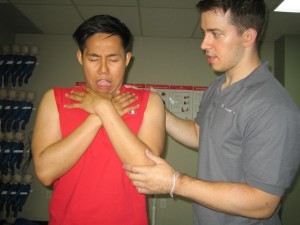Always bear in mind that pneumonia is basically an infection in the lung parenchyma. As a result, it leads to the diminished capability of the lungs to supply oxygen throughout the body. The fungal spores are present in most healthy individuals but with the introduction of pneumonia, the body could not initiate the normal defenses to counter the negative effects of fungi. The cases of fungal pneumonia are uncommon, but some doctors frequently mistake the condition as the common bacterial pneumonia.
What are the causes?
This type of pneumonia is caused by pneumocystis jiroveci which is present in the lungs of most healthy individuals and typically inhaled as spores. In some occasions, the spores enter the bloodstream via injuries or other conditions.
The fungi tend to vary based on the infection and location where the fungus was encountered. There is also a related group of fungal infections called as “opportunistic” infections that can also cause fungal pneumonia, but these infect immunocompromised individuals due to the heredity or acquired conditions such as HIV. Take note that the group of fungus includes candidiasis, aspergillus, Cryptococcus neoformans and mucomycosis.
What are the signs and symptoms?
- Dry cough
- Chest pain
- Mild fever
- Wheezing
- Shortness of breath
Once the disease progresses, the breath of the individual becomes shorter and the cough becomes severe until he/she could no longer breathe without assistance.

Diagnosing fungal pneumonia
Always bear in mind that fungal pneumonia is considered less common than the other forms of pneumonia. Samples such as sputum and blood are taken for laboratory analysis and chest radiography. In case fungal pneumonia is primarily suspected, diagnostic techniques might include fine needle aspiration and fiber optic bronchoscopy.
In severe cases, open lung biopsy or thoracoscopic biopsy might be carried out. The latest diagnostic techniques include spiral CT scan and even pulmonary scanning.
Treatment
When it comes to the basic form of fungal pneumonia, it does not usually require any form of treatment. The other forms might require basic drug treatment involving antibacterial agents. Always bear in mind that the type of fungal infection determines the suitable drug treatment while severe cases might require surgical intervention to take away the infected tissue.
Survival rate
The survival rate among healthy individuals usually depends on the strain of the fungal infection as well as the overall health of the individual. If the condition is diagnosed early, it will shorten the length of the illness and there is a higher chance for survival.
The highly virulent forms of the disease have a high percentage mortality rate if the condition is not treated. In studies conducted, the survival rate of immunocompromised individuals even when the disease was diagnosed early and suitable medications were given is almost 50% in some of the clinical trials.
